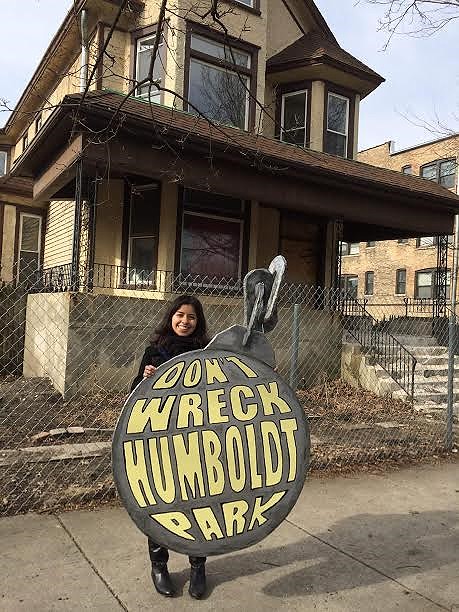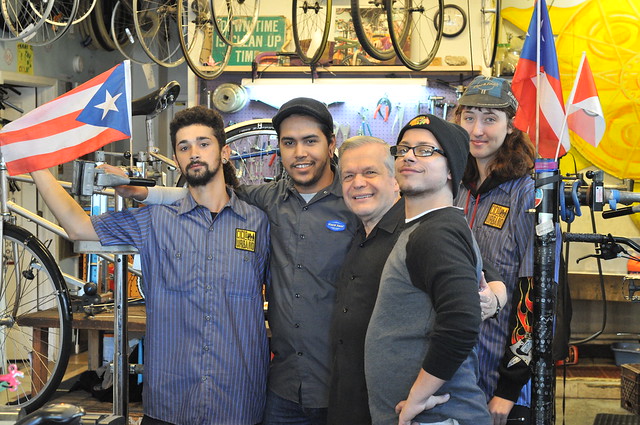
[Last year the Chicago Reader launched a weekly transportation column written by Streetsblog Chicago editor John Greenfield. We syndicate a portion of the column on Streetsblog after it comes out online; you can read the remainder on the Reader’s website or in print.]
In October leaders from the local Black Lives Matter movement talked with me about factors that affect travel options for African-Americans in Chicago, but that are sometimes overlooked by decision makers. These include subpar public transit service, unsafe walking conditions, and limited access to bike facilities, as well as expenses like train fares and traffic fines that can be significant for poor and working-class people. Worries about street crime and police abuse also influence their transportation choices.
Last week local Latino and Latina social justice activists told me that their communities deal with similar challenges, as well as unique concerns undocumented immigrants face when it comes to navigating the city. In addition, Chicago's Mexican-American and Puerto Rican neighborhoods seem to be especially susceptible to the gentrification and displacement sometimes associated with bike lanes, trails, and transit-friendly housing.
Lynda Lopez, a member of the Humboldt Park chapter of Grassroots Illinois Action; Alma Zamudio, who has worked with several different Latino affordable housing, labor, and social justice organizations; and José López, executive director of the Puerto Rican Cultural Center, all agreed to share their thoughts on these issues.
Lynda Lopez, a 25-year-old Mexican-American, was born in Chicago and lives in Hermosa. She works at the Brighton Park Neighborhood Council doing youth outreach, and, for disclosure, occasionally freelances for Streetsblog Chicago, the website I edit. We started off talking about the particular challenges faced by undocumented immigrants.
"Undocumented residents often live in areas with poor public transit access," she said. "There's a big intersection between immigration and transportation—where you can afford to live, where your job is, and whether you can afford to drive. . . . "You see people getting up really early to make it to low-wage jobs via CTA."
Illinois did address one big transportation issue for undocumented immigrants in 2013, when the state began issuing "temporary visitor driver's licenses" to people without visas.
"Before that, you either didn't drive or drove without a license," Lopez said. "So it eased that concern." (The law also made travel safer for everyone because applicants are required to pass a driver's test and sign up for car insurance.)
However, Lopez said, our country's dysfunctional immigration system has made everyone less safe when it comes to hit-and-run crashes.
"When you're an undocumented resident, there's a constant fear that any interaction with the police is going to lead to immigration problems," she said. She said she believes this apprehension causes some undocumented drivers to flee from crashes without reporting them, even if they're not at fault. According to data released by the city of Chicago, between 2005 and 2014, two out of every five local pedestrian fatalities involved drivers who fled.
Zamudio, also 25, was born in Guanajuato, Mexico, immigrated to Joliet with her family when she was four, and now lives in Pilsen. Earlier this decade she helped organize a campaign by the Little Village Environmental Justice Organization and other groups to restore CTA bus service on 31st Street. Since Little Village is a blue-collar Mexican neighborhood—with the highest percentage of residents under 18 of any Chicago community, according to the U.S. Census—it has a high demand for transit service, as do most other local Latino neighborhoods. The route had been canceled in 1997 due to low ridership, leaving the #21 Cermak and #60 Blue Island/26th Street buses as the only east-west bus lines serving Little Village.
"So if you lived in southern Little Village you had to walk all the way up to 26th or Cermak," Zamudio said. "Old people couldn’t walk all that way, and some residents are afraid to walk on certain blocks."





